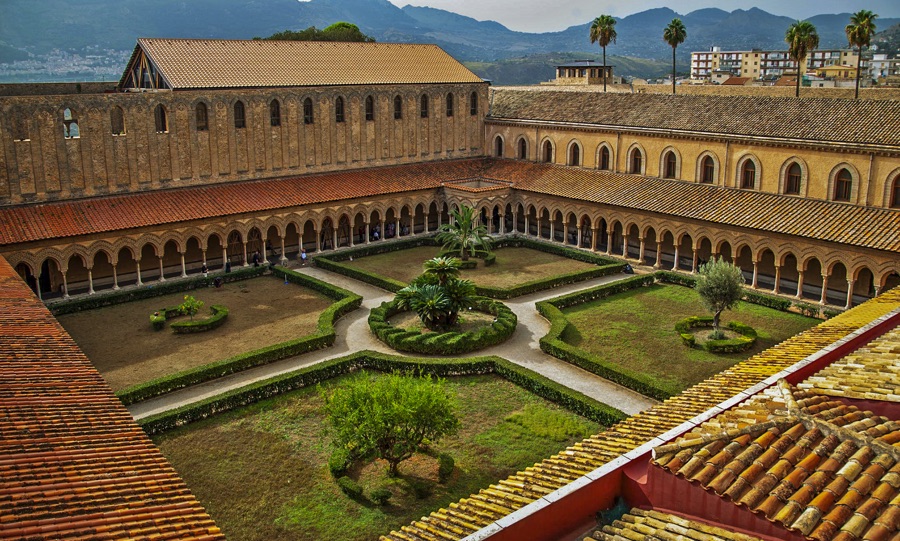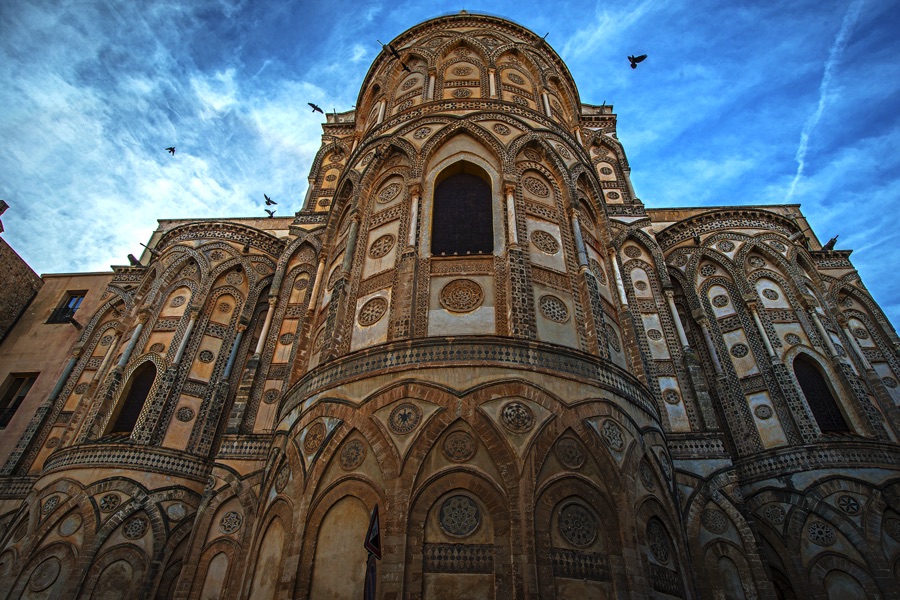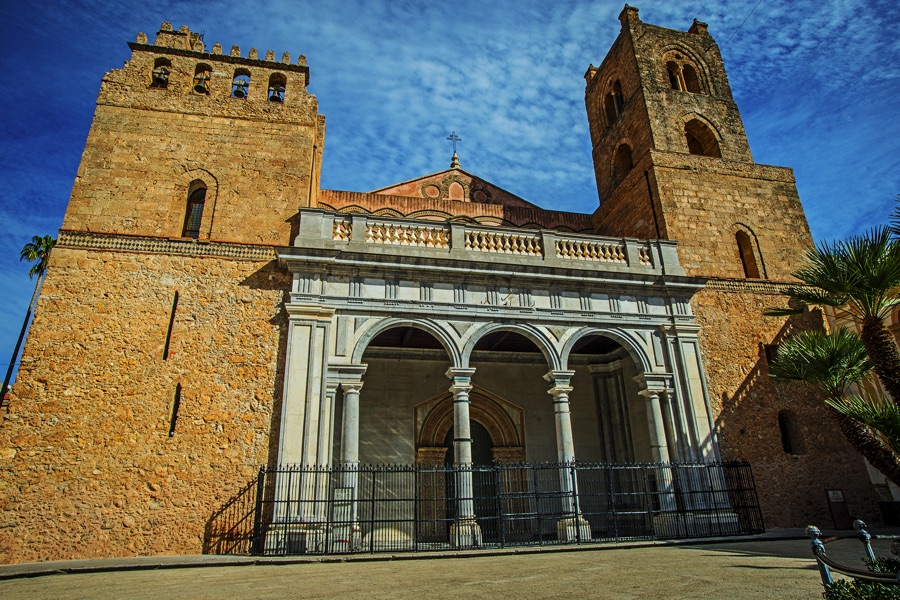
Since its origin, the Monreale Cathedral was connected to all the surrounding buildings, from the cloister, adjacent to the right side of the church to the south, to the
the monastery
, whose northern wing touched it.
The rich external decoration of the Cathedral’s three east-facing
semicircular apses
was linked to the eastern façade of the Royal Palace, echoing its majestic compositional rhythm.

The decision to emphasise the ornamental composition of the east-facing architecture was prompted by the desire to enhance the noblest part of the building, located in the sanctuary area.
The orderly ensemble of the many mouldings that make up the outer walls of the apses is formed by
ogival arches
, lower in height, which intersect each other on the same axes with a sinuous rhythm, almost as if to compose a silent melody. The contrast of colours seems to form the musical accompaniment, animated by the notes of the brown limestone, the grey-black lava tuff from Vesuvius, and the red bricks used in the thin horizontal bands. Softening this varied concert of colours is the warm golden-brown hue of the background.
The presence of small columns underneath the pointed arches, decorated with
capitals
of simple workmanship that are inserted between the varied geometric scores, marks the upward movement of the architectural elements of the apses, both inside and outside.
Compared to the richness of the three apses, the rest of the building, from the
transept
and the
naves
to the main west-facing façade, has a simple and austere volume, with linear wall decorations reproducing the classic sequence of blind arches. They modulate, in a regular rhythm, the lateral façades located to the south and north. A more articulated decoration, somewhat reminiscent of the homologous façade of
Cefalù Cathedral
, can be found on the western wall where, above the marble portal, there is a large window within the decorative scheme.
 It is made up of intersecting ogival arches, leaving room for tondos containing various geometric designs, highlighted by two-tone inlays.
It is made up of intersecting ogival arches, leaving room for tondos containing various geometric designs, highlighted by two-tone inlays.